Abstract
Bones deposited in caves show that, before the arrival of humans, at least 27 species of land birds lived on the Tongan island of 'Eua, where 13 indigenous species live today. Six of these 13 species were recorded from pre-human strata; three others probably occurred on 'Eua in pre-human times but were not in the fossil sample; and four others probably colonized 'Eua since the arrival of humans approximately 3000 years ago. Of the 23 species of extinct or extirpated land birds recorded from 'Eua, the nearest geographic occurrences of conspecifics or most closely related congeners are from the Solomon Islands (1 species), New Caledonia (2 species), Fiji and/or Samoa (9 species), elsewhere in Tonga (8 species), or unknown (3 species). The avifauna of West Polynesia (Fiji-Tonga-Samoa) is more closely related to that of Melanesia than that of East Polynesia. There was little pre-human turnover in Tongan land birds. The arrival of humans has influenced the Tongan avifauna more than any climatic, tectonic, or biological event of the past approximately 100,000 years.
Full text
PDF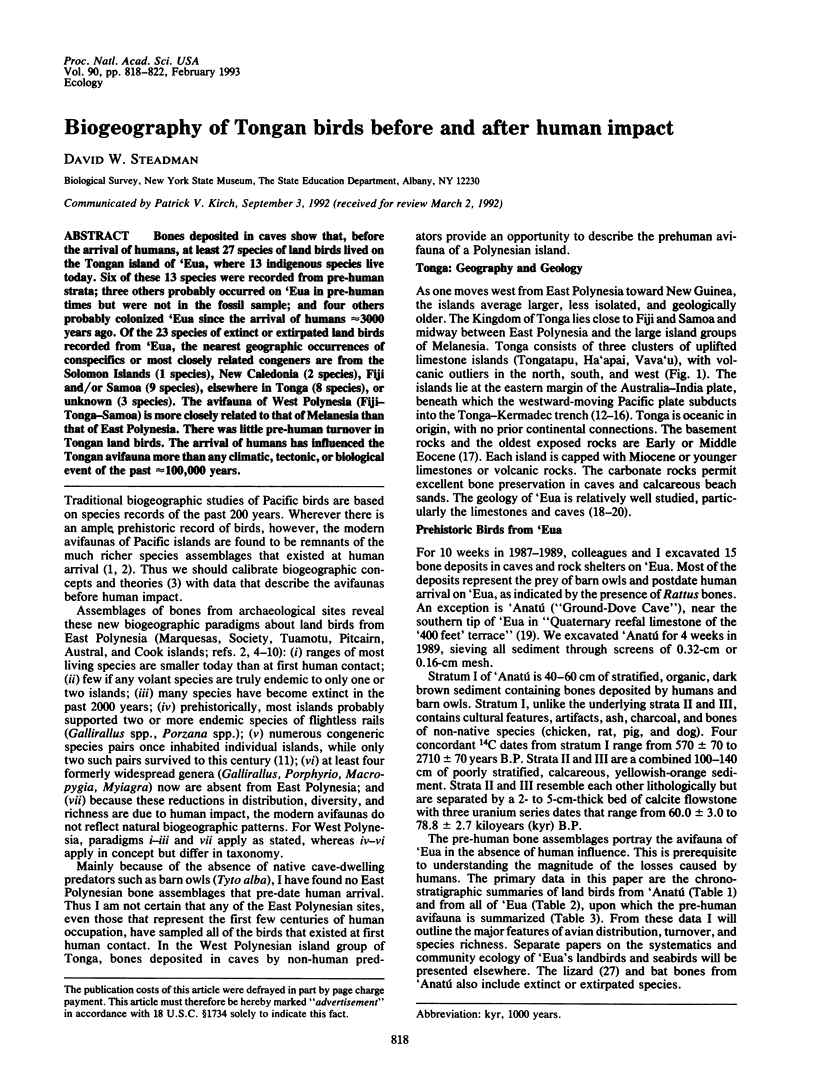
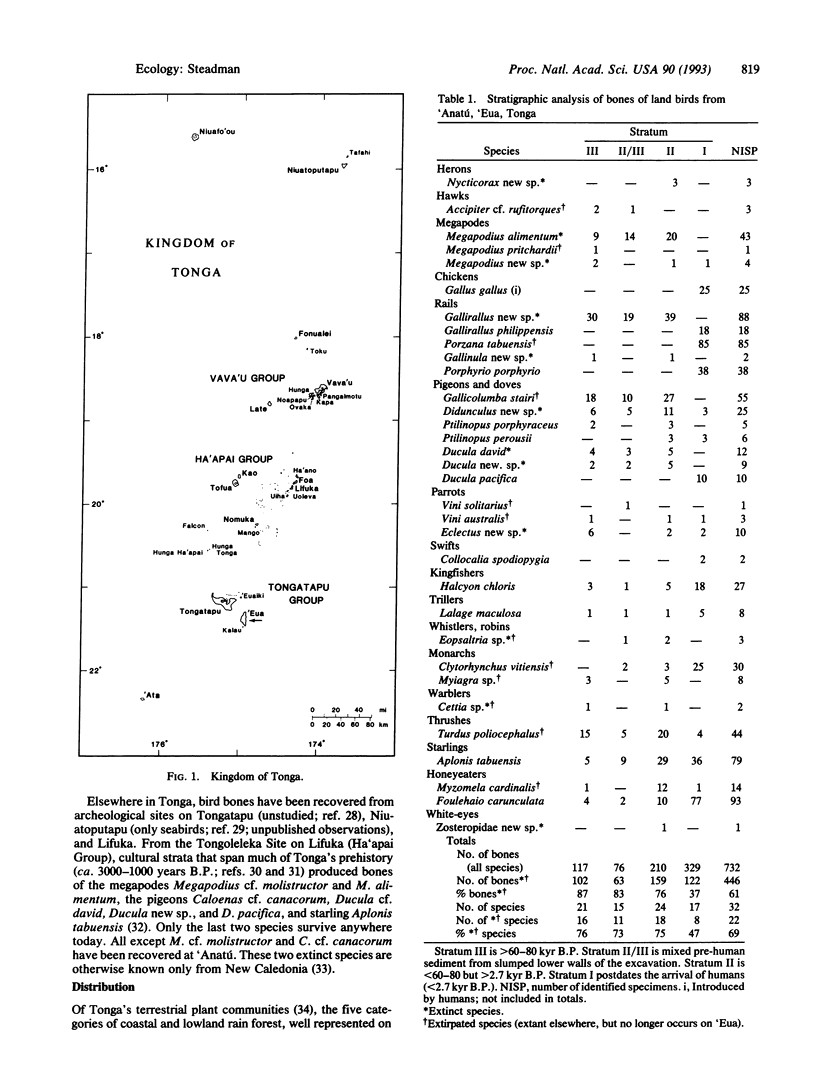
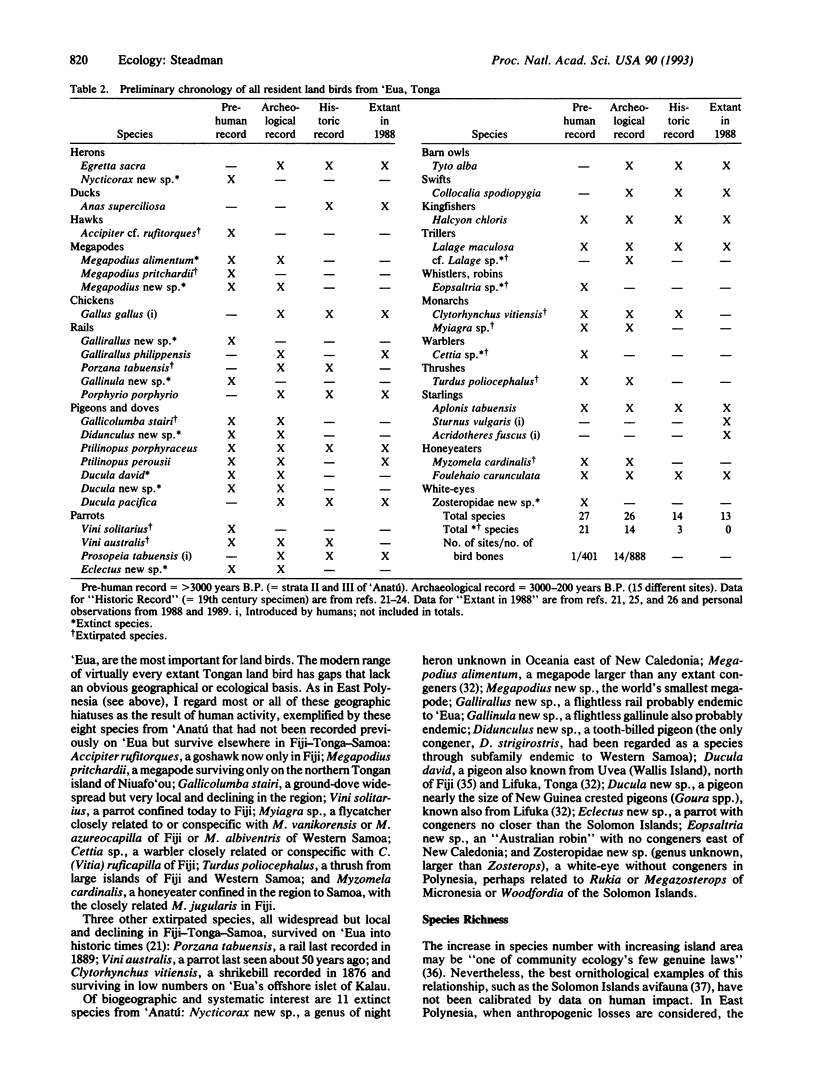
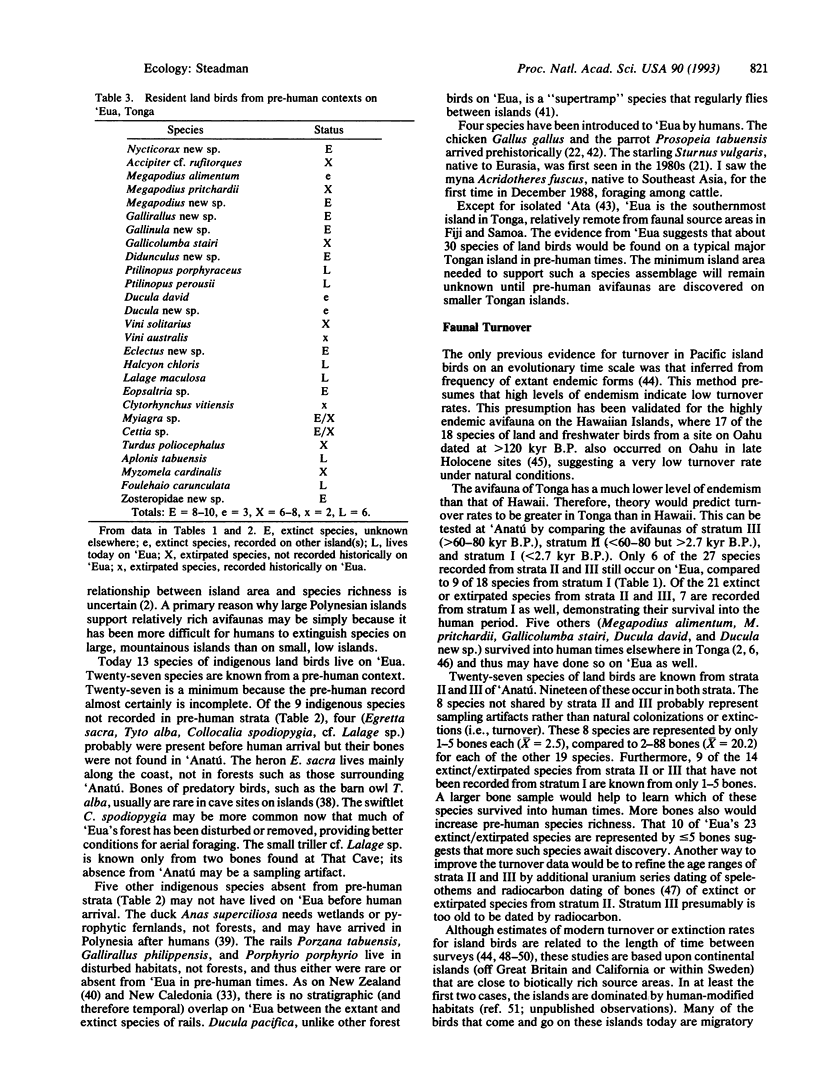
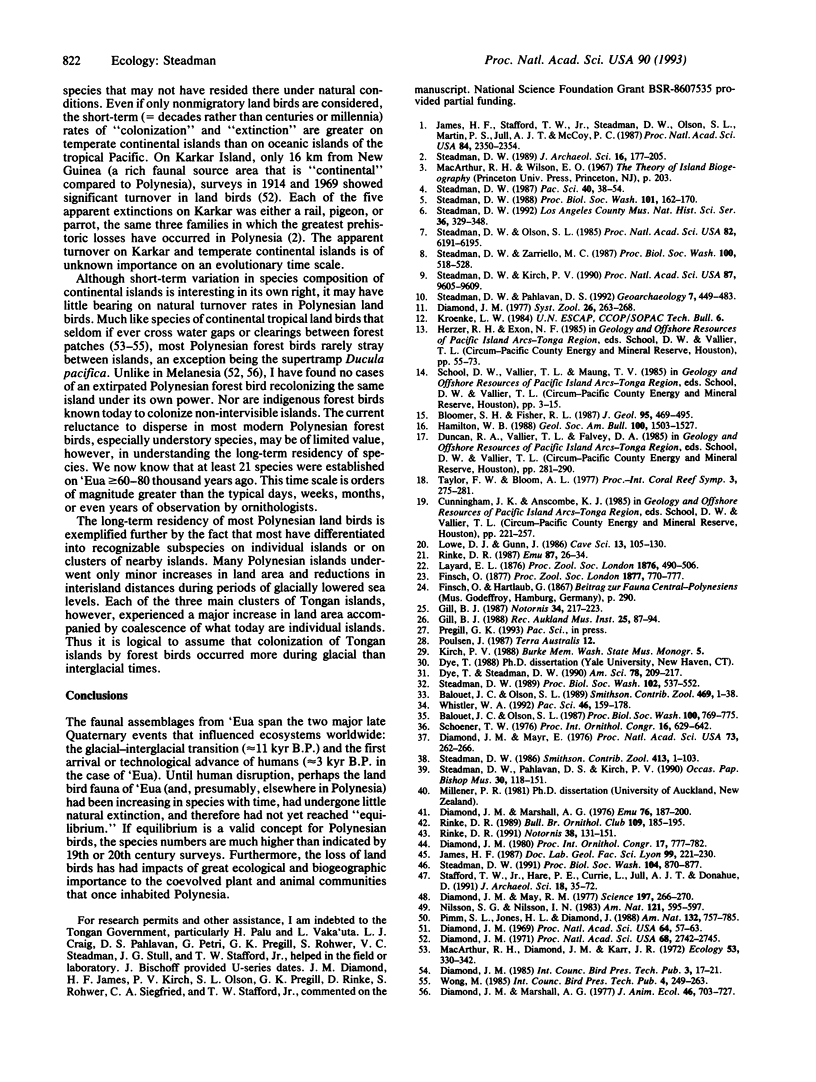
Selected References
These references are in PubMed. This may not be the complete list of references from this article.
- Diamond J. M. Avifaunal equilibria and species turnover rates on the channel islands of california. Proc Natl Acad Sci U S A. 1969 Sep;64(1):57–63. doi: 10.1073/pnas.64.1.57. [DOI] [PMC free article] [PubMed] [Google Scholar]
- Diamond J. M. Comparison of faunal equilibrium turnover rates on a tropical island and a temperate island. Proc Natl Acad Sci U S A. 1971 Nov;68(11):2742–2745. doi: 10.1073/pnas.68.11.2742. [DOI] [PMC free article] [PubMed] [Google Scholar]
- Diamond J. M., May R. M. Species turnover rates on islands: dependence on census interval. Science. 1977 Jul 15;197(4300):266–270. doi: 10.1126/science.197.4300.266. [DOI] [PubMed] [Google Scholar]
- Diamond J. M., Mayr E. Species-area relation for birds of the Solomon Archipelago. Proc Natl Acad Sci U S A. 1976 Jan;73(1):262–266. doi: 10.1073/pnas.73.1.262. [DOI] [PMC free article] [PubMed] [Google Scholar]
- James H. F., Stafford T. W., Jr, Steadman D. W., Olson S. L., Martin P. S., Jull A. J., McCoy P. C. Radiocarbon dates on bones of extinct birds from Hawaii. Proc Natl Acad Sci U S A. 1987 Apr;84(8):2350–2354. doi: 10.1073/pnas.84.8.2350. [DOI] [PMC free article] [PubMed] [Google Scholar]
- Steadman D. W., Kirch P. V. Prehistoric extinction of birds on Mangaia, Cook Islands, Polynesia. Proc Natl Acad Sci U S A. 1990 Dec 15;87(24):9605–9609. doi: 10.1073/pnas.87.24.9605. [DOI] [PMC free article] [PubMed] [Google Scholar]
- Steadman D. W., Olson S. L. Bird remains from an archaeological site on Henderson Island, South Pacific: Man-caused extinctions on an "uninhabited" island. Proc Natl Acad Sci U S A. 1985 Sep;82(18):6191–6195. doi: 10.1073/pnas.82.18.6191. [DOI] [PMC free article] [PubMed] [Google Scholar]


